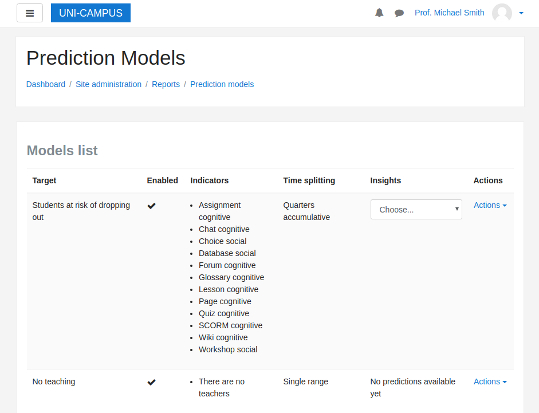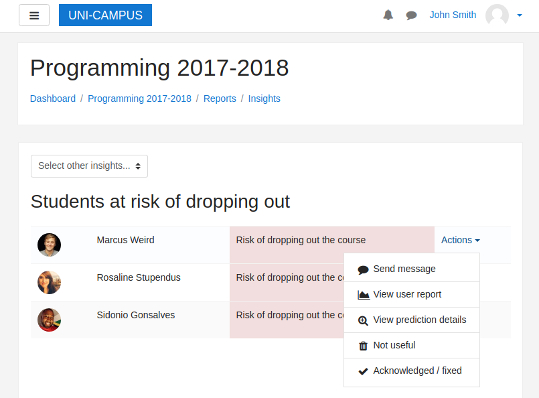Analytics models
From MoodleDocs
| Note: This page is a work in progress |
This page describes the Analytics models tool used to visualise, manage and evaluate prediction models.
Models management
You can access the tool from Site Administration > Reports > Analytic models to see the list of prediction models.
These are some of the actions you can perform on a model:
- Edit: You can edit the models by modifying the list of indicators or the time-splitting method. All previous predictions will be deleted when a model is modified. Models based on assumptions (static models) can not be edited.
- Enable / Disable: The scheduled task that trains machine learning algorithms with the new data available on the system and gets predictions for ongoing courses skips disabled models. Previous predictions generated by disabled models are not available until the model is enabled again.
- Evaluate: Evaluate the prediction model by getting all the training data available on the site, calculating all the indicators and the target and passing the resulting dataset to machine learning backends, they will split the dataset into training data and testing data and calculate its accuracy. Note that the evaluation process use all information available on the site, even if it is very old, the accuracy returned by the evaluation process will generally be lower than the real model accuracy as indicators are more reliably calculated straight after training data is available because the site state changes along time. The metric used as accuracy is the Matthew’s correlation coefficient (good metric for binary classifications)
- Log: View previous evaluations log, including the model accuracy as well as other technical information generated by the machine learning backends like ROC curves, learning curves graphs, the tensorboard log dir or the model's Matthew’s correlation coefficient. The information available will depend on the machine learning backend in use.
- Get predictions: Train machine learning algorithms with the new data available on the system and get predictions for ongoing courses. Predictions are not limited to ongoing courses, this depends on the model.


